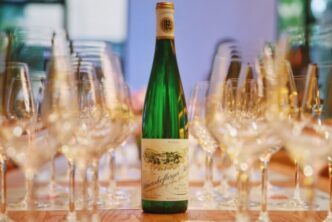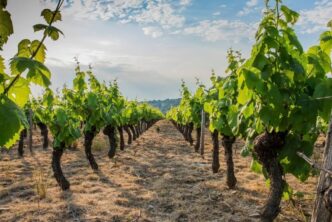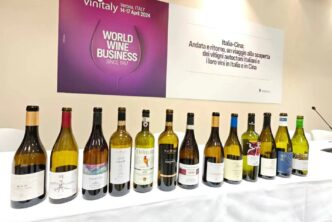A recent tasting of the highly praised Willamette Valley Chardonnay prompted me to ask the question: what is Chardonnay now? In many ways the grape acts as a semi neutral foil to capture micro-terroir differences, the expressive range as determined by the micro climates under which the grapes is grown and the importance of the vessels in which the wines are aged. Undergoing malolactic fermentation is an essential part of the process of transforming the raw Chardonnay juice into a final wine worthy of the attention and purchase of serious wine lovers. Two recent changes in Burgundy are also influencing new world Chardonnistas: Reducing the use of new oak to as little as 20-25% and equally important working with larger barrels for the aging of the wine before bottling. These changes are never merely experimental. There was and is a goal behind such changes. Many growers will say that prolonged Malos in larger vessels results in fresher and oxidation resistant wines. Terroir may be the bed rock of good Chardonnay but it alone hardly determines the final structure, balance and sensual attributes of the wines.

It seems to me that a new aesthetic has come to dominate many though not all the vignerons in Burgundy and quite a few in California and Oregon: I shall call it austerity not just as a feature of contemporary Chardonnays but as a goal as well. Of course there are places in Burgundy—and in California such as the true Sonoma Coast and the Anderson Valley—which lend themselves to the austere potential in Chardonnay. If you taste a Savigny Les Beaune Chardonnay or a Chablis Fourchaume along side a Meursault Charmes or Puligny Folatieres you will experience austerity versus richness in an indelible manner. And isn’t that what makes Chardonnay so useful and popular: It can go the range from the juicy/nutty/creamy to the oyster shell, peppery, salty, citrus with equal aplomb. Yet if I am not mistaken there has been quite a conscious effort on the part of Cote de Beaune wine makers to reduce the fat and “sweetness” striving for as low Phs as possible under contemporary conditions. If I am not mistaken, this is the new norm and goal of many growers in Burgundy. The message has definitely reached new world Chardonnay producers. This replacement of austerity for richness will be with us for some time I suspect. The success of such wines with the dominant reviewers means that most producers will follow the trend.
I conclude by saying that it seems to me that austerity is an attribute not a goal. In some regions and vineyards the pervasive factor of austerity is altogether appropriate: Blanc de Blanc Champagne, young Barolos, Burgundies from the Savigny/Aloxe Corton villages, much but not all of Chablis, Chenin Blanc grown in Saumur Champigny, dry Rieslings from the Saar, Chardonnay from the coolest sites in the Anderson Valley to name some. But treating Austerity as a virtue in itself is highly questionable. Ther successful interplay of lean and rich in a fine Meursault makes for an indelible experience. Spice, nuttiness, a touch of the tropical are all legitimate manifestations of the true potential of Chardonnay. Reducing them to mere background attributes in favor of full frontal austerity is a questionable way to work with Chardonnay.

 English
English




Excellent points, Bob. I agree 100%.
High praise from a past master of full bodied Chardonnays!
Great to read your comment, it’s both an honour and a pleasure to have you reading us. Bob certainly raised some interesting questions and provided some things to mull over indeed!
I will admit that one person’s austerity might be another’s minerality. My point is that one finds this austerity, as I call it, in so many white Burgundies and Oregon Chardonnays that it seems to be a fundamental value in the contemporary zeitgeist with regard to dry white wine.
well said!